Welcome to the first installation of my column, Technique Point, which will break down the what, how and why of skills throughout the season.
Technique is defined as “a way of carrying out a particular task.” In gymnastics, technique means the way skills are executed. Although there are some universal rules, there isn’t always a “correct” way to execute a skill, and that’s why skills can look very different depending on the gymnast who is performing them.
Typically, however, having good technique means skills are executed more safely, easily and beautifully than skills that are executed with poor technique.
Often people confuse technique with form, which has to do more with aesthetics. Good form means having straight legs and pointed toes (among other things), and it’s often a lot easier to perform skills with good form when you have the proper technique. A gymnast has time and leisure to think about things like form when she is safely performing skills, whereas those who are struggling to land a skill on their feet do not.
Think about it this way: (Technique) + (Form) = Proper execution of a skill.
Form is a lot easier to analyze than technique. It’s pretty easy to spot flexed feet and bent legs, but it’s a lot harder to understand the why behind the form break. It often takes growing up with the sport, learning the basics and being corrected—often—to understand where the body should be positioned and what it should look like.
That’s what this column is for: to share insights with fans that maybe haven’t had this kind of experience with the sport. It’s my passion to help others appreciate the sport as much as I do, and it’s much easier to fall in love with something when you understand it.
So, without further ado, let’s start the way we always should in gymnastics… With the basics.
The Round-off Back Handspring
This is a universal entry into back tumbling, which means it’s very common in NCAA gymnastics. The round off back handspring (ro bhs) allows the gymnast to transfer power from her run into her salto (the flip that follows the ro bhs). Although it may seem very basic, this sequence is arguably the most important part of any back tumbling pass.
The first part after the run is the hurdle, which prepares the gymnast for her round off. The hurdle does many things, including setting the gymnast up on her dominant leg, which will lead into the skill. Typically, the hurdle will be long and stretched out to maximize the energy transfer from the run into the salto (if the hurdle went straight up, the gymnast would just be wasting that energy by jumping high in the air, and her pass would lose speed and strength).
The gymnast’s body line should be somewhere around 45 degrees with the floor, and her head should be neutral (tucked between her arms).
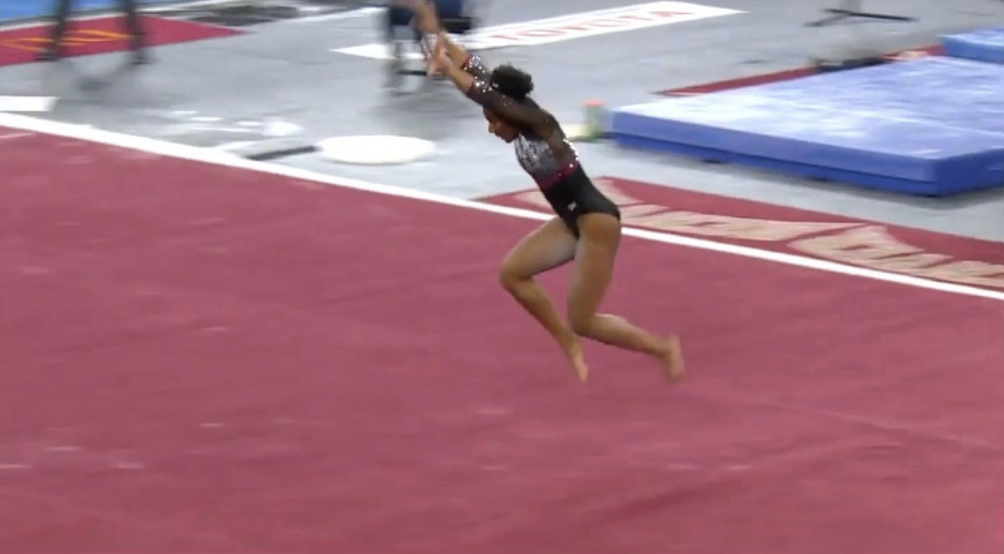
Next, the gymnast will land the hurdle and begin to elongate her body for her round-off. She does this by stretching out as much as possible and reaching at another 45-degree angle (this time it’s 45 degrees below parallel to the floor), while driving her non-dominant leg (driving leg) up.
Her dominant leg should wait as long as possible to meet her driving leg, because the snap together creates force and energy for the back handspring. If they meet too soon, the round-off will be weak.
Her arms should remain straight when they hit the floor, allowing her shoulders to work with the springs to push off and onto her feet (hold your arms extended above your head and try lifting them to make them stretch taller towards the ceiling—this is the action that occurs on the floor called a “block”).
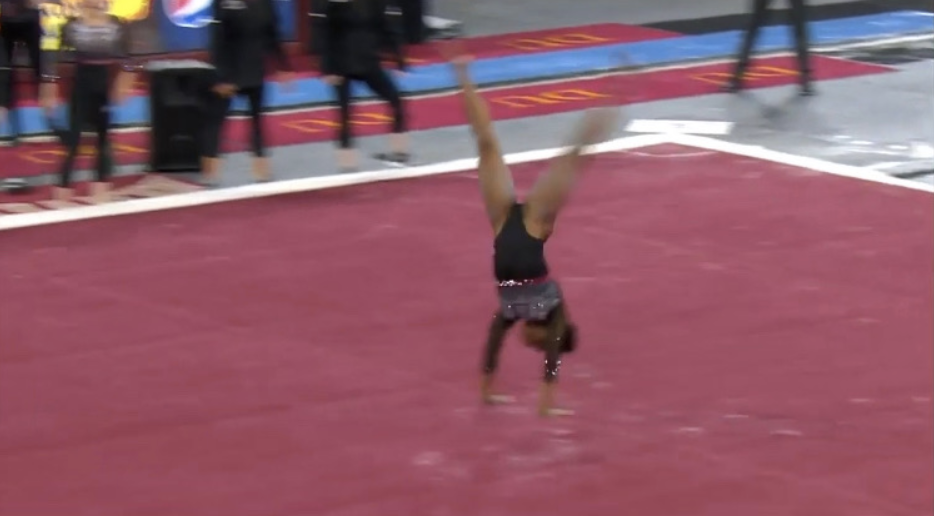

Once the gymnast blocks off the floor, her body will snap into a seated or chair position, which is the entry position for her bhs. Her arms will remain somewhere around parallel to the floor, which she will then throw backward to create momentum into the following skill.
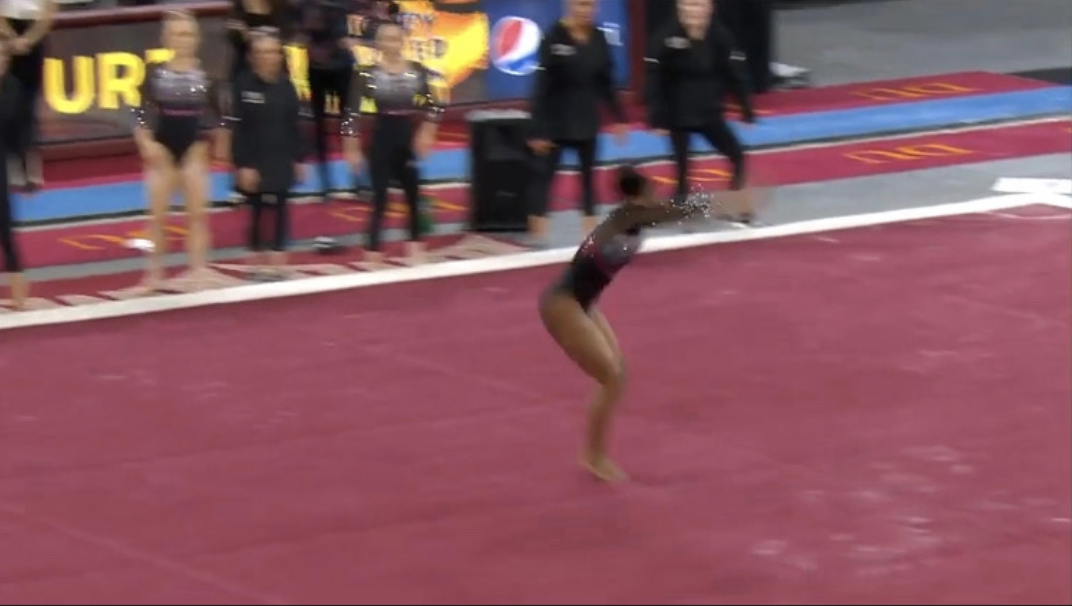
Now it’s time for the bhs. Good technique on this foundational skill starts with a hard push off from the round-off, reaching arms as far back as possible while maintaining a tight arched position. Length = height, meaning the longer a gymnast can stretch her back handspring out, the more compression she’ll have moving into her salto.
(You may have noticed that Simone Biles has extremely long back handsprings, which helps her transfer speed from her run into vertical height.)
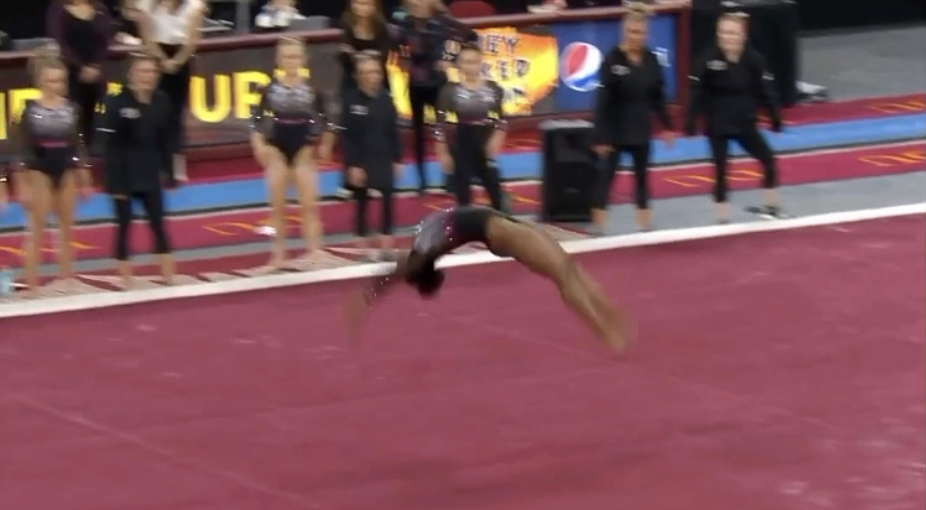
Arms should remain tight once they hit the floor, allowing the gymnast to block out of her shoulders (just like on the ro) and into the second part of the skill. Head should remain neutral between the arms to help maintain a strong body shape with as few breaks as possible.
(A lot of gymnasts like to stick their head out on this part, which reduces shoulder block and typically causes them to pike down.)
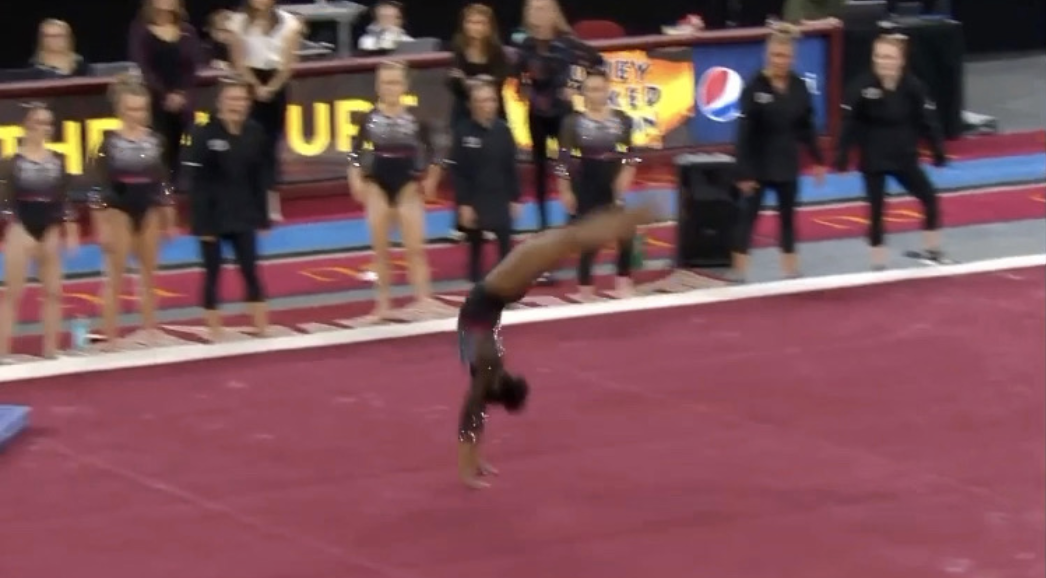
The best gymnasts tweak their back handspring technique depending on the skill that follows and the height/power it requires. For example, Biles’s back handspring technique on her triple double is actually slightly different than the technique she employs on her double double.
However, typically gymnasts should block hard enough out of their shoulders to allow for a tight hollow in the snap down (snap down = the motion after a gymnast pushes her arms off the floor and before her feet touch the ground). A tight hollow position is ideal in the second part of the skill since it precedes the set (set = the takeoff position into any kind of flip), for which you want to be tall and stretched out.
Piking down instead of maintaining a tight hollow position in the snap down often means the gymnast’s momentum goes back instead of up, reducing the height and airtime of the gymnast’s next skill.

The last part of the back handspring (or arguably the first part of the salto) is the set. The set definitely changes depending on the salto, but it should always remain tight. This means maintaining a strong core with hips tucked under, standing tall and extending through the legs and toes into the punch (punch = the push-off from the ground into the air).
Arms should be somewhere near perpendicular with the floor, and head should remain neutral (pretty much always a rule).
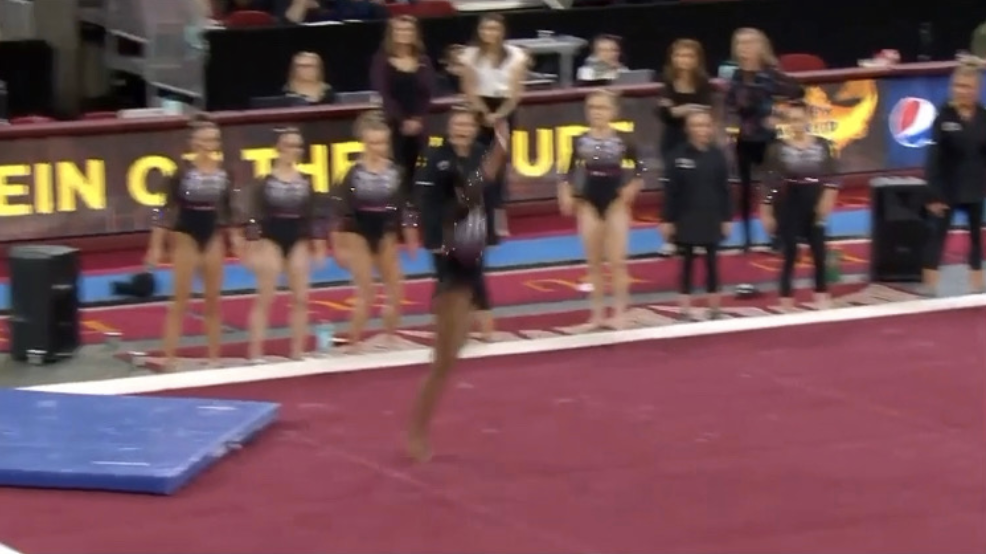
When the ro bhs is performed correctly…the salto is a piece of cake!

Follow #TechniquePoint on Twitter for more thoughts and analysis.
Article by Katie Norris
Like what you see? Consider donating to support our efforts throughout the year!




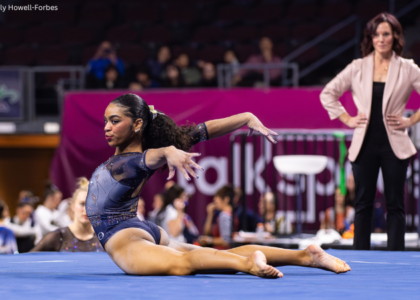
One comment